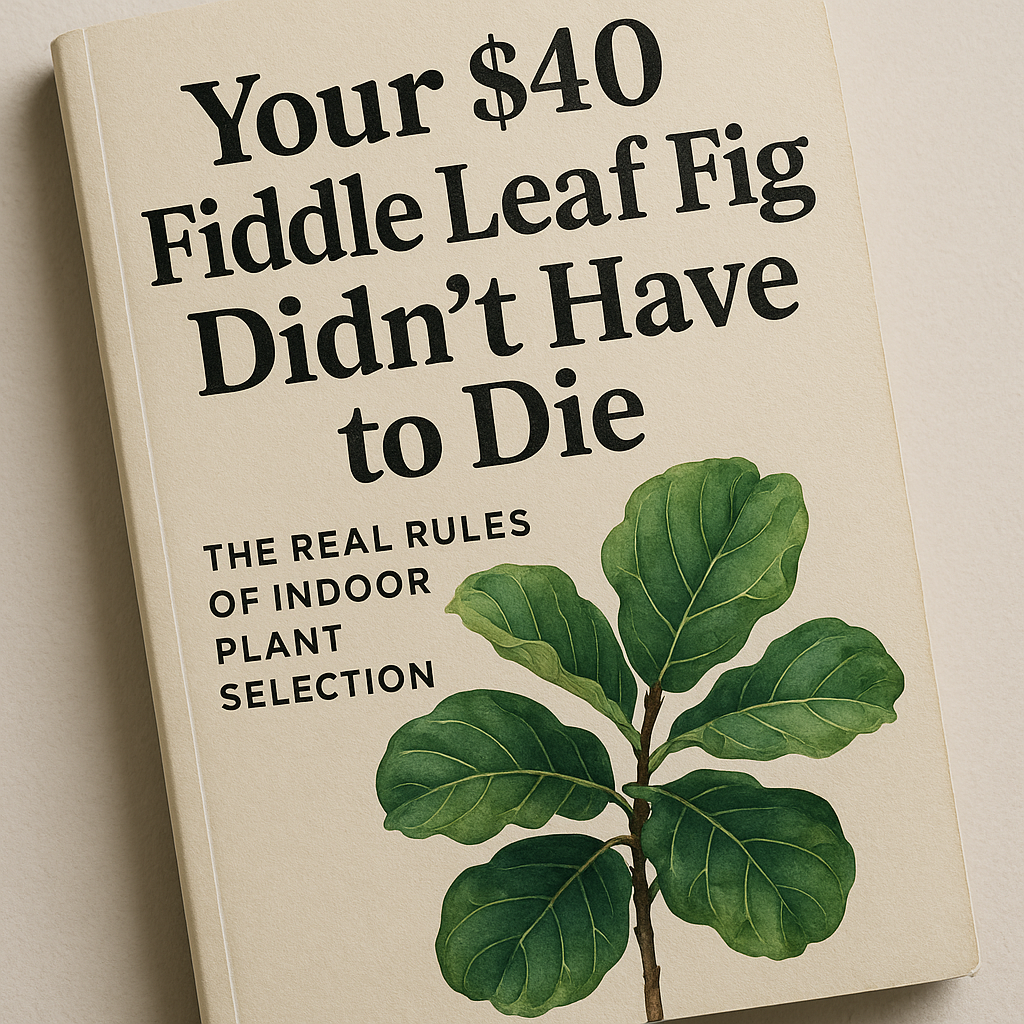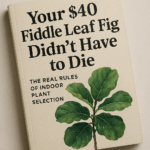Match the Right Greenery to Your Light, Space, and Lifestyle.

There’s something deeply satisfying about walking into a room filled with thriving plants. The air feels fresher, the space looks alive, and somehow, your $2,000 couch suddenly seems worth every penny.
But here’s the thing nobody tells you when you’re standing in the garden center, cart full of leafy promises: not all plants are created equal, and your dimly lit apartment is about to become a plant cemetery unless you know what you’re doing.
Let’s talk about the art of choosing indoor plants because yes, it’s an art, not a science experiment (though sometimes it feels like both).
The Light Situation: Your Plant’s Non-Negotiable Need
Before you fall in love with that fiddle leaf fig on Instagram, let’s have an honest conversation about your lighting situation. And no, that single north-facing window doesn’t count as “bright indirect light,” no matter how much you want it to.
Low Light Legends
If your space could double as a vampire’s lair, embrace it. Snake plants (Sansevieria) are basically indestructible. I’ve seen them survive college dorm rooms, which is saying something.
Pothos and ZZ plants are also champions of the shadows, quietly photosynthesizing while you binge-watch your third series of the week.
Medium Light Miracles
Got a spot a few feet from a window? This is your sweet spot.
Spider plants, peace lilies, and Chinese evergreens will thrive here. These are the plants that make you look like you have your life together without actually requiring you to have your life together.
Bright Light Beauties
If you’re blessed with south-facing windows and actual sunbeams, congratulations: you’ve won the plant lottery.
Succulents, cacti, and yes, that coveted fiddle leaf fig can live their best life here. Just remember: bright light doesn’t mean “roast my plant like a Thanksgiving turkey.”
Space: Size Matters (And So Does Growth Potential)
That cute 6-inch monstera at the nursery? It has ambitions. Big ones. In two years, it’ll be plotting world domination from your living room corner.
Think about your space realistically. Studio apartment? Opt for vertical growers or compact varieties. Snake plants grow up, not out. Trailing plants like string of pearls can cascade from shelves, maximizing your vertical real estate.
Have a cathedral ceiling and empty corners that echo? Go big. A mature bird of paradise or a rubber tree can fill that space and make your room look like it belongs in Architectural Digest (or at least on someone’s aspirational Pinterest board).
The Lifestyle Reality Check
Here’s where we separate the plant parents from the plant acquaintances.
The Frequent Flyer
Gone for work half the month? Snake plants, ZZ plants, and succulents are your ride-or-die companions. They’ve evolved to survive neglect. It’s basically their superpower.
The Helicopter Parent
Love to fuss and fiddle? Ferns and calatheas will happily accept your attention. They actually need it. Prayer plants will reward your misting habits and humidity obsession.
The Goldilocks Zone
Want something that needs attention but won’t die if you forget about it for a week? Philodendrons, pothos, and spider plants are your people. They’ll droop dramatically when thirsty (guilt-tripping you into action) but bounce back beautifully after a drink.
The Air Quality Hustle (It’s Real, But…)
Yes, plants clean the air. But let’s be honest: unless you’re living in a literal jungle (we’re talking dozens of plants), the air-purifying effects are modest.
That said, the psychological benefits? Absolutely real. Studies show plants reduce stress, boost mood, and increase productivity. Plus, they give you something to talk to that won’t judge your life choices.
Spider plants and snake plants do excel at filtering toxins, and peace lilies are particularly good at removing mold spores. So if you live in a humid climate or a basement apartment, they’re worth considering.
The Aesthetics Game
Let’s not pretend aesthetics don’t matter. They do. A lot.
Modern Minimalist
Stick with sculptural plants with clean lines. Rubber trees, snake plants, and monsteras have that architectural quality that doesn’t compete with your carefully curated space.
Bohemian Jungle
Go wild. Literally. Mix trailing pothos with upright palms, throw in some ferns, and embrace the chaos. More is more.
Classic Traditional
Elegant peace lilies, sophisticated orchids (yes, they’re easier than you think), and glossy anthuriums bring timeless appeal.
The Beginner’s Starter Pack
If you’re new to this and overwhelmed, start here:
- Pothos: Forgiving, fast-growing, and practically begs to be propagated and shared with friends.
- Snake Plant: The ultimate “I forgot I owned this” survivor.
- Spider Plant: Produces babies you can pot and suddenly you’re a plant parent of dozens.
- Peace Lily: Tells you when it’s thirsty by dramatically fainting (then perks right back up).
The Truth About Pets and Plants
Got furry friends? This matters more than you think. Many common houseplants are toxic to cats and dogs. Skip the pothos, philodendrons, and peace lilies if you have curious pets.
Instead, go for spider plants, Boston ferns, or prayer plants: all pet-safe and still gorgeous.
Your First Plant Shouldn’t Be Your Last
Here’s the secret successful plant people know: everyone kills plants. Everyone. That $40 fiddle leaf fig you murdered? Consider it tuition. You learned something (probably that you have low light and a forgetful watering schedule).
Start small. Start easy. As you figure out what works in your space and your life, level up. That jungle-like living room you’re dreaming of? It’s a journey, not a destination.
The best indoor plant isn’t the trendiest or the most Instagrammable. It’s the one that’s still alive in six months. Choose based on your actual conditions, not aspirational ones. Be honest about the light you have, the time you’ll commit, and the space you can spare.
And remember: talking to your plants might make you look a little unhinged, but they genuinely seem to like it. Or maybe that’s just the oxygen talking.





